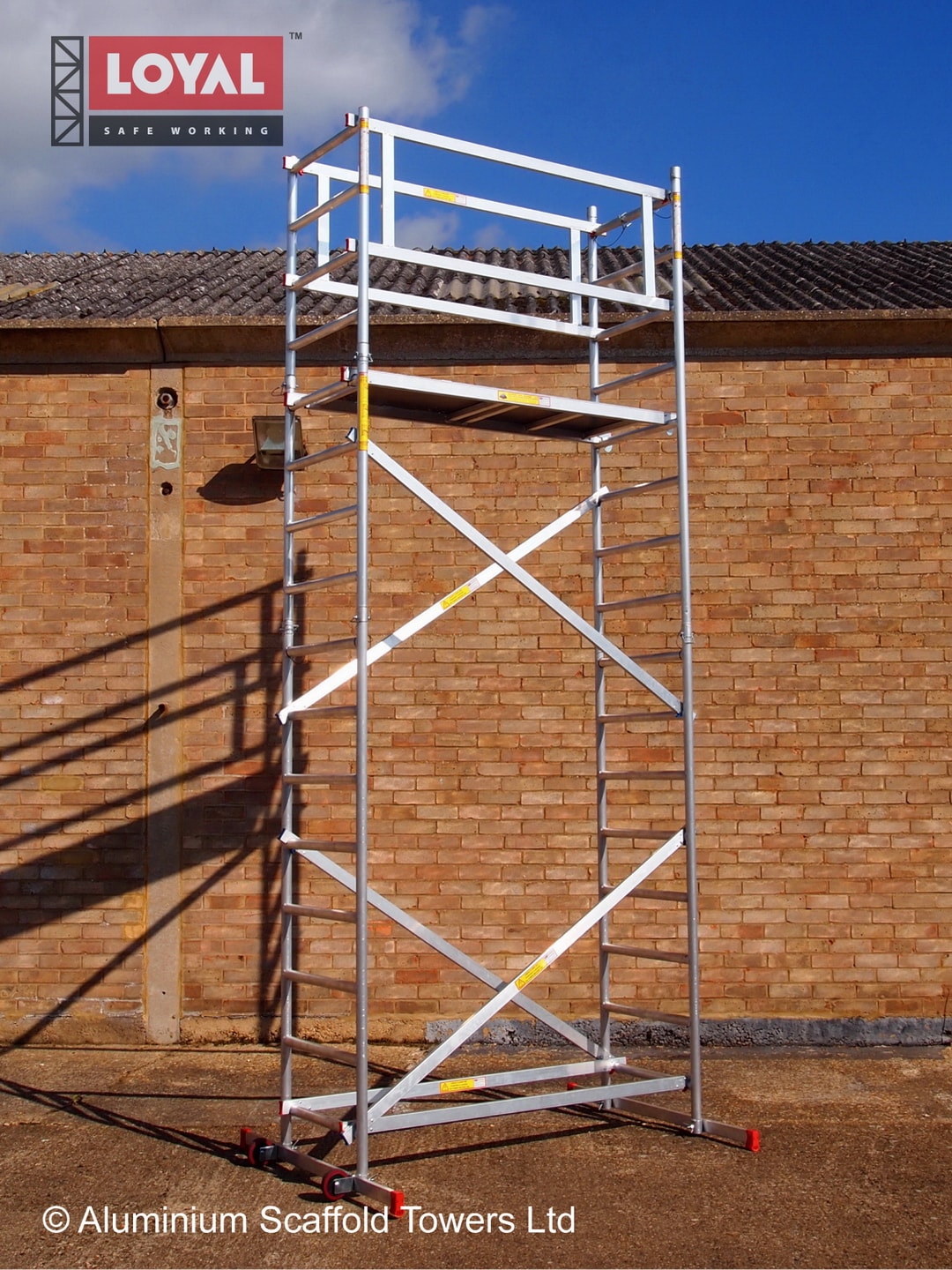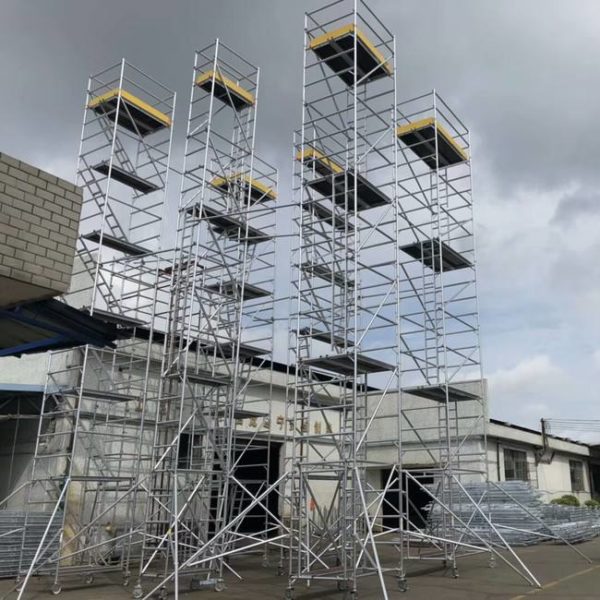Advanced Scaffold Innovation: Building the Future
Scaffolding Around the World: Distinct Usages and Structures ============================================================
Discover the world's diverse scaffolding strategies. Asia features bamboo scaffolds – versatile, environment-friendly, with social origins. Europe flaunts dynamic frameworks like Amsterdam's red-brick exteriors and Burano's pastel structures. Africa blends practice and sustainability making use of bamboo. South America makes use of rope and timber, showcasing regional ingenuity. The United States and Canada leads with advanced styles, embracing modern technology and sophisticated products for more secure construction. The world provides an abundant tapestry of scaffolding options distinct to each area.
Bamboo Scaffolds in Asia
Throughout Asia, bamboo scaffolds have been utilized for centuries due to their convenience, resilience, and environmentally friendly nature. These lasting building devices are deeply rooted in the area's cultural relevance, showing a harmonious connection between nature and human ingenuity. Bamboo, a fast-growing and renewable resource, is not just bountiful yet also solid, making it a suitable material for scaffolding in building and construction jobs throughout Asia.
The cultural significance of bamboo scaffolds in Asia goes beyond their practical applications. They represent conventional workmanship, resilience, and adaptability, symbolizing the values of effort and advancement that are extremely esteemed in several Asian cultures. The use of bamboo scaffolding additionally highlights a commitment to lasting practices, as bamboo is naturally degradable and has a reduced environmental influence compared to conventional metal scaffolds.
In nations like China, Japan, and Vietnam, bamboo scaffolds are an integral part of the construction industry, showcasing a blend of old customs and modern-day strategies. The ongoing dependence on bamboo scaffolds in Asia emphasizes not only their effectiveness yet additionally their long-lasting tradition in the built environment.

Vivid Structures in Europe
The vibrant building landscape of Europe is defined by a kaleidoscope of vivid frameworks that mesmerize and influence site visitors from all over the world. European cities showcase a rich tapestry of vibrant patterns adorning building work of arts that go back centuries. From the legendary red-brick facades of Amsterdam to the pastel-hued buildings of Burano in Italy, each structure tells a story through its distinct shade combination.
In Spain, the whimsical works of Antoni Gaud, such as the mosaic-clad Park G ell in Barcelona or the complex information of Casa Batll, stand as archetypes of Europe's vivid architectural marvels. Relocating northwards, the striking contrast of the blue-domed churches versus the whitewashed buildings in Santorini, Greece, produces an attractive scene that is etched psychological of all that go to.
Whether it's the vibrant and bright colors of the structures or the fragile pastels that adorn historic spots, Europe's colorful frameworks add a sense of charm and magic to its already captivating building heritage.
Cutting-edge Styles in Africa
With a blend of custom and modernity, Africa's architectural landscape showcases innovative designs that show the continent's rich social heritage and forward-thinking method. In recent years, there has actually been a remarkable shift towards using sustainable materials and involving regional areas in the layout and construction processes of structures throughout Africa.
One example of cutting-edge style in Africa is the use of sustainable bamboo as a primary building material. Bamboo is abundant in several African regions, making it an affordable and environmentally friendly choice to traditional building materials. This shift towards sustainable products not only aids guarantee the ecological impact of building and construction however also supports regional economic climates.
In addition, community involvement has come to be a main aspect of architectural tasks in Africa. Engineers and building contractors are increasingly collaborating with regional neighborhoods to integrate their standard expertise and social practices right into modern-day styles. This approach not only guarantees that the built atmosphere meets the requirements of individuals that will certainly use it yet additionally fosters a sense of possession and pride among community participants. https://beckenhamscaffolding.co.uk/index.html By embracing lasting materials and community involvement, Africa's ingenious building styles are not just aesthetically pleasing however likewise socially and eco conscious.
Conventional Approaches in South America
In South America, traditional building and construction approaches have long been intertwined with the region's abundant cultural heritage and building history, forming the built atmosphere in distinct and long-lasting ways. One of the prominent standard scaffolding methods in South America includes using rope techniques and wood platforms. This approach shows the resourcefulness and ingenuity of local home builders, that make use of natural materials to produce sturdy and functional assistance structures for building jobs.
Rope strategies are often utilized to secure the wood systems at numerous elevations, enabling workers to access hard-to-reach areas during the structure process. These systems are usually made from in your area sourced wood, giving a sustainable and cost-effective service for scaffolding needs. The use of ropes not just boosts flexibility and flexibility on building and construction websites but additionally demonstrates the proficient workmanship passed down via generations.
In South America, the assimilation of rope strategies and wooden platforms in traditional scaffolding exemplifies a harmonious mix of cultural practices and useful building techniques, showcasing the region's abundant building heritage.
Futuristic Scaffolding in North America
Advancing beyond standard techniques, North America showcases cutting-edge methods to scaffolding that welcome sophisticated technology and contemporary design principles. Advanced scaffolding in The United States and Canada integrates robot assistance and makes use of advanced products to change building and construction procedures.
Robot support plays an essential duty in improving effectiveness and safety on building and construction sites. Automated robot systems are used to aid in the setting up and disassembly of scaffolding frameworks, decreasing the need for manual work and decreasing the threat of mishaps. These robots are outfitted with innovative sensing units and software that allow them to browse intricate settings with accuracy and speed.

Additionally, making use of innovative materials such as carbon fiber and composite alloys in scaffolding layout uses enhanced toughness and strength while keeping a lightweight account. These materials offer exceptional load-bearing capability, allowing for taller and more elaborate scaffolding arrangements to be recognized.
Frequently Asked Questions
What Are the Environmental Effects of Using Bamboo Scaffolds in Asia?
Bamboo scaffolds in Asia, while standard and lasting, present both positive and unfavorable environmental impacts. They advertise social preservation and usage native products, however deforestation for bamboo harvesting can be destructive otherwise handled sustainably.
Exactly how Do the Colorful Frameworks in Europe Mirror the Cultural Heritage of the Area?
Vibrant structures in Europe mirror the area's rich social heritage via their intricate layouts and vibrant tones. These structures act as architectural combination of historic traditions, showcasing cultural symbolism and artistic expressions one-of-a-kind to every nation.
What Materials Are Frequently Used in the Cutting-edge Layouts of Scaffolding in Africa?
In Africa, bamboo technologies are a popular function in the design of scaffolding frameworks. Sustainable materials like bamboo are typically utilized as a result of their toughness and environment-friendly residential or commercial properties, showcasing a harmonious blend of development and ecological consciousness in construction practices.
Exactly How Do Conventional Approaches of Scaffolding in South America Differ From Modern Construction Techniques?
Conventional methods of scaffolding in South America often include utilizing locally sourced materials like bamboo and wood, showing cultural methods. These approaches vary from contemporary building and construction techniques that depend on steel and aluminum frameworks for enhanced efficiency and durability.
What Advancements in Technology Have Influenced the Advancement of Futuristic Scaffolding in North America?
Advancements in technology, such as digital truth and robotics, have actually greatly influenced the advancement of advanced scaffolding in North America. These developments have transformed safety, efficiency, and accuracy in building projects, bring about groundbreaking structures. https://beckenhamscaffolding.co.uk
Final thought
To summarize, scaffolding has actually been used in different unique methods and frameworks around the world. From bamboo scaffolds in Asia to vibrant structures in Europe, cutting-edge designs in Africa, traditional techniques in South America, and futuristic scaffolding in North America, each area showcases its own unique technique to scaffolding.
These varied uses of scaffolding highlight the creative thinking and flexibility of construction techniques throughout different continents.
